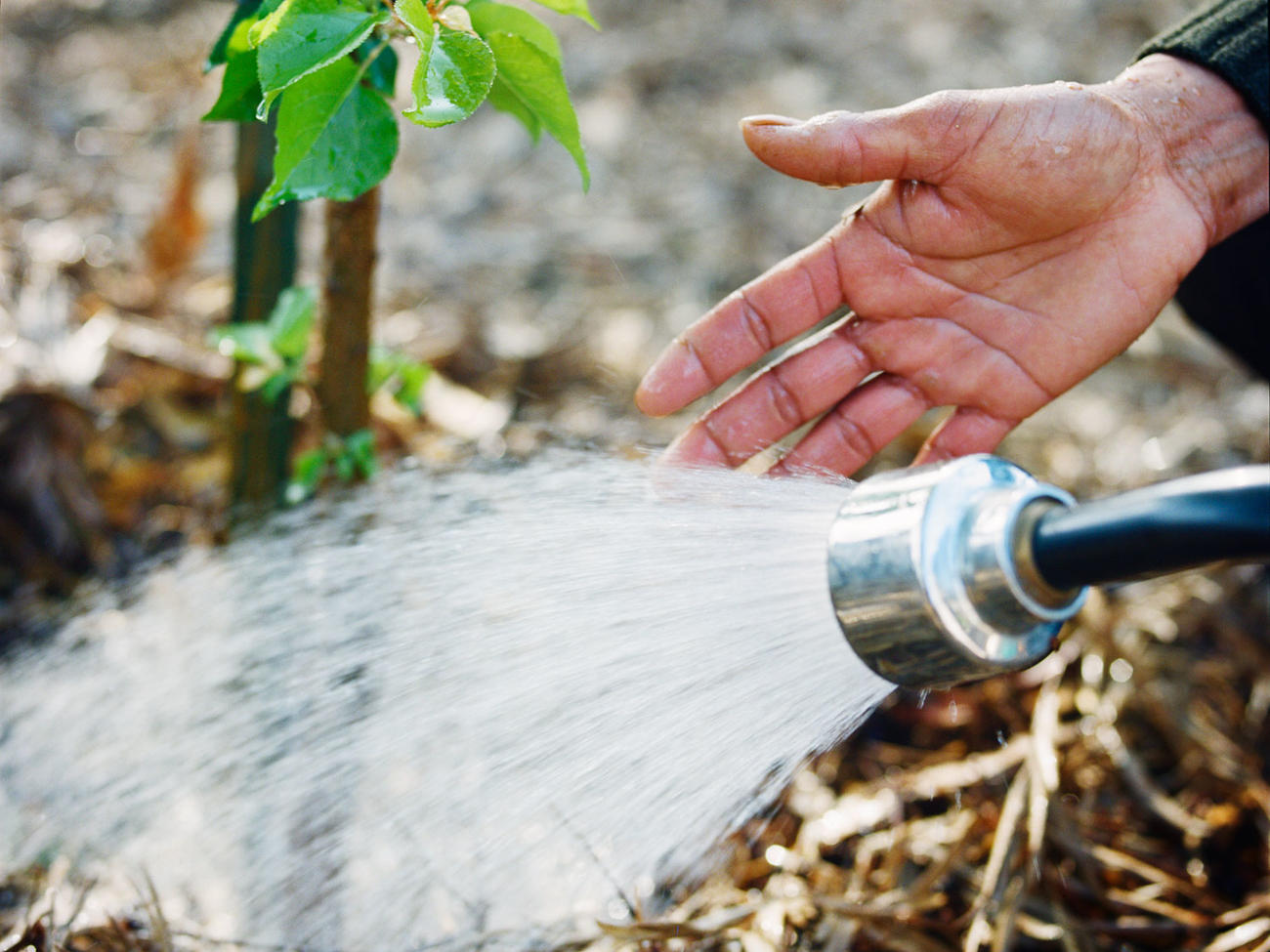
Watering guidelines
How much to water, and how frequently

Photo by Carol Von Zumwalt
Plants, like animals, need water to live. A seed must absorb water before it can germinate. Roots can take up nutrients only when water is present in the soil; water transports nutrients throughout plants. And water is essential to photosynthesis.
However, how much water your plants need and how frequently they need it depend on a number of interrelated factors, including soil texture, the plants themselves and their age, and the weather.
Your soil’s ability to absorb and retain water is closely related to its composition. Clay soils absorb water slowly and drain slowly as well, retaining water longer than other soils. Sandy soils, in contrast, absorb water quickly and drain just as quickly. Loam soils absorb water fairly rapidly and drain well, but not too fast. You can work in organic amendments to help clay soils absorb water faster and drain better and to make sandy soils more moisture retentive.
